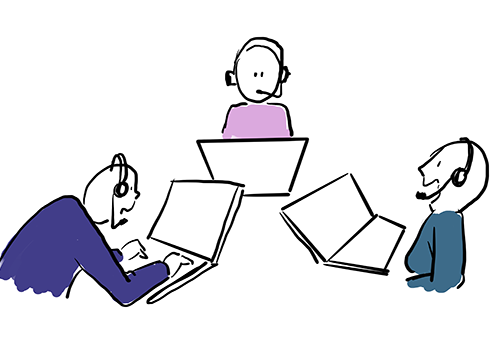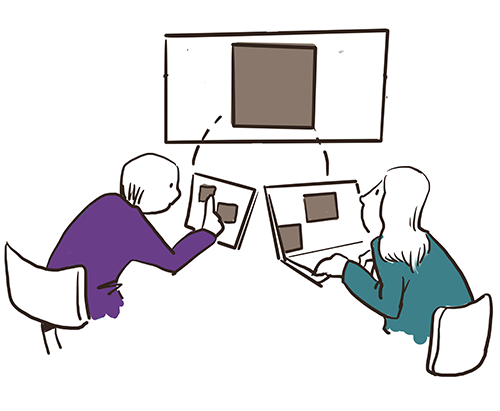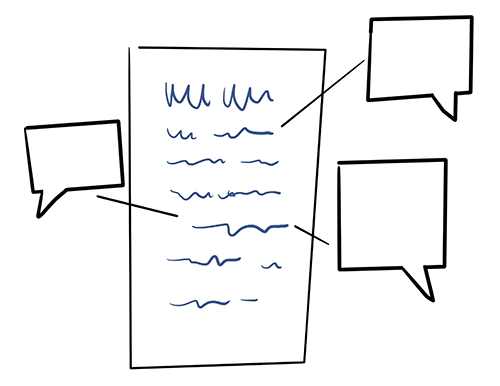Written by Department of Science Education and Centre for Digital Education
The Department of Science Education at UCPH use a five-phase model (‘the TDS model’) to describe best practice in teaching. The model applies the principle that teaching and learning is not just a question of the teacher ‘pouring’ knowledge into a group of passive students; rather it is about creating the space for participants to work independently with a given set of data within a framework that has been planned and organised by the teacher.
The model therefore has different phases, some of which are more teacher-oriented (devolution, parts of the validation phase, institutionalisation) and some of which are more participant-oriented (activation, formulation, parts of the validation phase).
| TDS phase | Description |
Online version |
|---|---|---|
Devolution |
The teacher introduces and presents a topic and then sets the participants an assignment on that topic. | The content for the devolution phase can be presented via a screencast showing powerpoint slides or a video, but the classroom management tasks at least should be done live as far as possible: i.e. giving out instructions, putting groups together, checking everyone is present, etc. |
Activation |
The participants work on a particular problem in groups; the teacher leaves them to get on with it independently. | Participants communicate with each other in groups, either via a given platform (e.g. breakout groups in Absalon Conference) or via a platform they have chosen themselves (Google Hangouts, Facetime, etc.). There should be a clear time limit, a clear product they need to come up with, and preferably a clear learning outcome they should focus on. It may be a good idea to give them a bit more time than you would in a face-to-face classroom context. |
Formulation |
The participants formulate their product: e.g. an answer or hypothesis; the teacher stays in the background. | The participants work together to present a product via an agreed media, e.g. Padlet or the discussion forum in Absalon, somewhere where everyone can see each other’s products. |
Validation |
All participants think about the answers and discuss which one(s) are valid based on the data they have available. The discussion may then be led by the teacher. | The participants see/read/study the other groups’ products in the given online forum. They given feedback on each other’s products, either individually or in groups. Optionally, groups can be ’paired up’, so group A gives feedback to group B and vice versa. This can be done using, for example, Peergrade. |
Institutionalisation |
The teacher contextualises the problem, which is then solved based on ’official knowledge’. | The teacher takes over again, live, and as far as possible arranges the different products/answers in a common framework which links up to the established knowledge on the topic. If so desired, the activity can be rounded off with a ready-made product: a video, a homepage, an article with instructions on what to read. |

